#egypt queen
Explore tagged Tumblr posts
Text
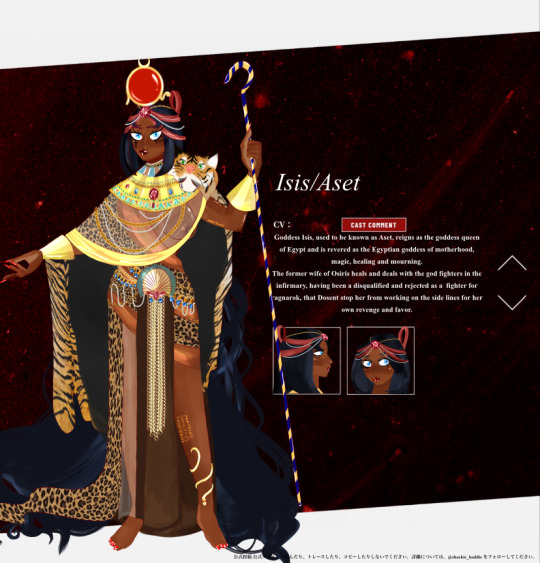
New Isis desginnn
~~~~
Do not steal/trace/remove signature/copy/remove source/ repost and claim as your own/sell/etc
~~~~~
During ragnarok
https://www.tumblr.com/mizz-sea-nymph/751915124222312448/isis-during-ragnarok
Personality
https://www.tumblr.com/mizz-sea-nymph/751915173692030976/isis-personality
Accessories
https://www.tumblr.com/mizz-sea-nymph/751915273143173120/isis-weapons-and-accessories
English voice
https://www.tumblr.com/mizz-sea-nymph/751914516379500544/forgot-to-post-isis-voice
Jp voice
https://www.tumblr.com/mizz-sea-nymph/751914609062166528/her-jp-voice
#record of ragnarok#shuumatsu no valkyrie#ror#snv#record of ragnarok oc#my art#shumatsu no valkyrie oc#終末のワルキューレ#ror anubis#snv Anibus#Egypt#Egyptian mythology#Isis#godess Isis#snv Isis#ror Isis#oc#my oc#digital art#Egyptian goddess#Ennead goddess#Egypt goddess#Egypt queen#cleopatra#African goddess
49 notes
·
View notes
Text
Nefertari
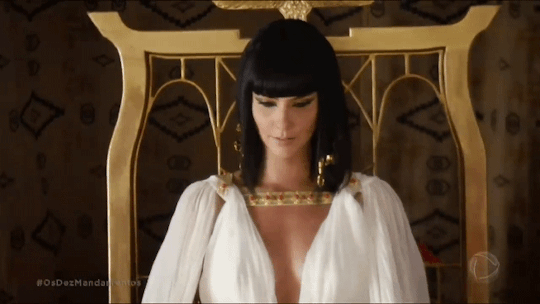
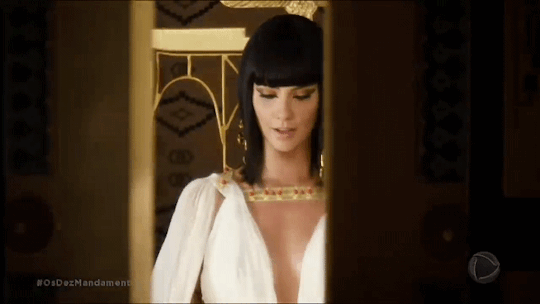
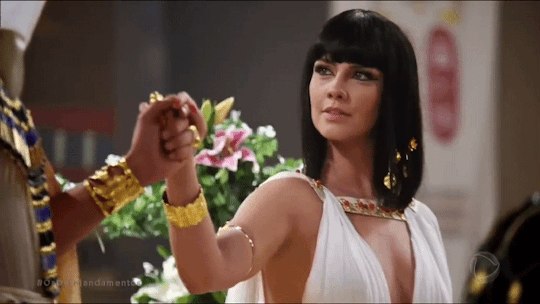
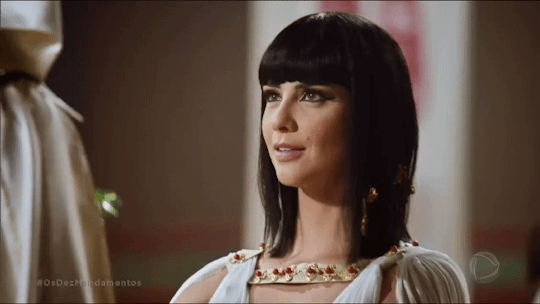

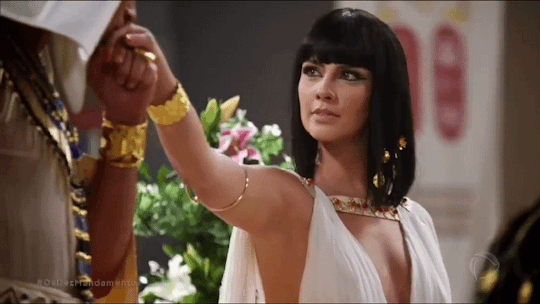
#history#queen nefertari#nefertari#reina nefertari#history of egypt#women in the egypt#woman in the egypt#ancient egypt#egypt queen#women in history#Faraonic era#Faraon#moises e os dez mandamentos#moises y los diez mandamientos
101 notes
·
View notes
Text
So, I saw this image on Facebook, and it was supposedly showing what Queen Nefertiti would have looked like in real life:

Now, I thought this AI generated garbage was just truly terrible on a number of levels; first off, she looks wayyyyyy too modern - her makeup is very “Hollywood glamour”, she looks airbrushed and de-aged, and as far as I’m aware, Ancient Egyptians didn’t have mascara, glitter-based eyeshadows and lip gloss. Secondly, her features are exceptionally whitewashed in every sense - this is pretty standard for AI as racial bias is prevalent in feeding AI algorithms, but I genuinely thought a depiction of such a known individual would not exhibit such euro-centric features. Thirdly, the outfit was massively desaturated and didn’t take pigment loss into consideration, and while I *do* like the look of the neck attire, it's not at all accurate (plus, again, AI confusion on the detailing is evident).
So, this inspired me to alter the image on the left to be more accurate based off the sculpture’s features. I looked into Ancient Egyptian makeup and looked at references for kohl eyeliner and clay-based facial pigment (rouge was used on cheeks, charcoal-based powder/paste was used to darken and elongate eyebrows), and I looked at pre-existing images of Nefertiti, both her mummy and other reconstructions. While doing this, I found photos of a 3D scanned sculpture made by scientists at the University of Bristol and chose to collage the neck jewellery over the painting (and edited the lighting and shadows as best as I could).

Something I see a lot of in facial recreations of mummies is maintaining the elongated and skinny facial features as seen on preserved bodies - however, fat, muscle and cartilage shrink/disappear post mortem, regardless of preservation quality; Queen Nefertiti had art created of her in life, and these pieces are invaluable to developing an accurate portrayal of her, whether stylistic or realistic in nature.

And hey, while I don't think my adjustments are perfect (especially the neck area), I *do* believe it is a huge improvement to the original image I chose to work on top of.
I really liked working on this project for the last few days, and I think I may continue to work on it further to perfect it. But, until then, I hope you enjoy!
Remember, likes don't help artists but reblogs do!
#Nefertiti#Queen Nefertiti#Ancient Egypt#Facial Reconstruction#art#artist#digital artist#historical#history#historical figure#ancient egyptians#artistic interpretation#historial facial reconstruction#Neferneferuaten#Queen Neferneferuaten Nefertiti#illustration#digital art#digital illustration
7K notes
·
View notes
Text
4 rolls ancient Egypt washi tape set
#egypt tape#egypt planner#egypt themed#mythology art#egypt art#egypt mythology#ancient egypt#egypt queen#egypt king
0 notes
Text

#karl friedrich schinkel#art#temple#temples#the magic flute#die zauberflöte#architecture#stage set#stage design#opera#theatre#isis#osiris#ancient egypt#ancient egyptian#europe#european#wolfgang amadeus mozart#palace#stars#queen of the night#night#cave#caves#rocky#palaces
245 notes
·
View notes
Text

“First Queen II: Sabaku no Joō” Yoshitaka Amano 1990
293 notes
·
View notes
Text

guess who’s finally reading queen of the damned
#ft my own design of akasha!#i know she’s technically predynastic egypt but shshshshshshsh#cw partial nudity#cw blood#akasha#queen of the damned#interview with the vampire#the vampire chronicles
186 notes
·
View notes
Text




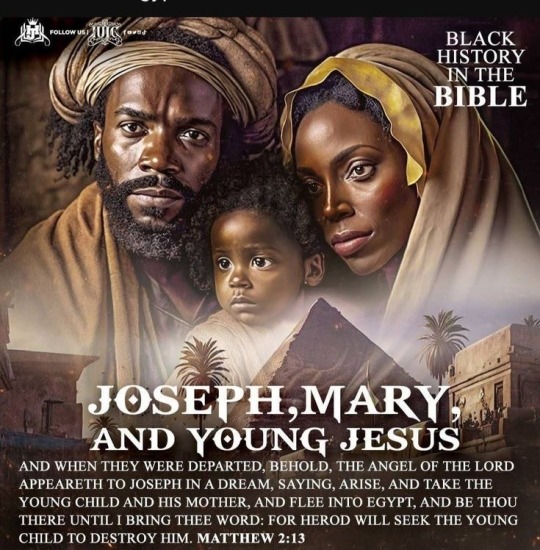
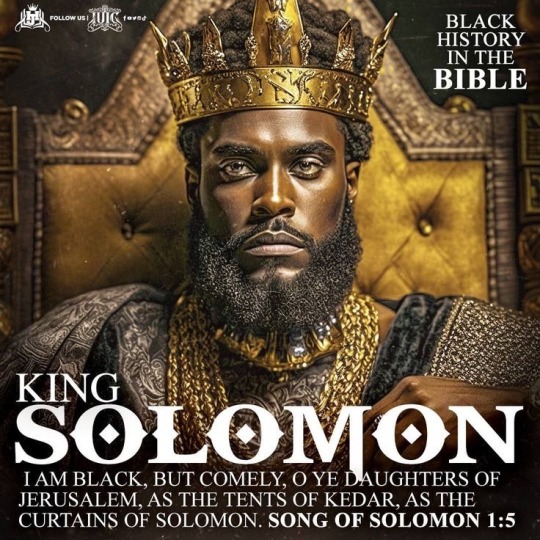
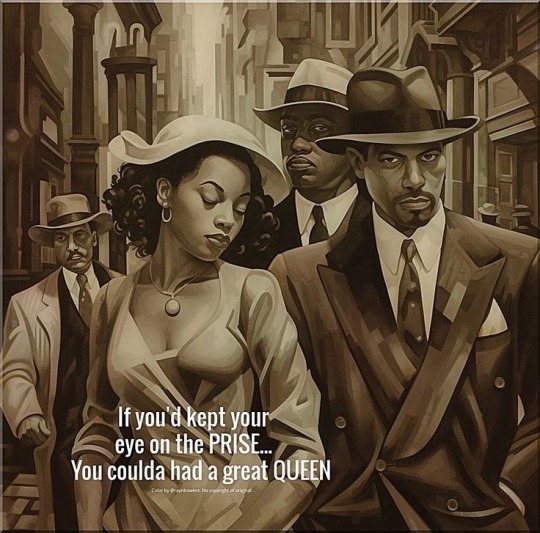
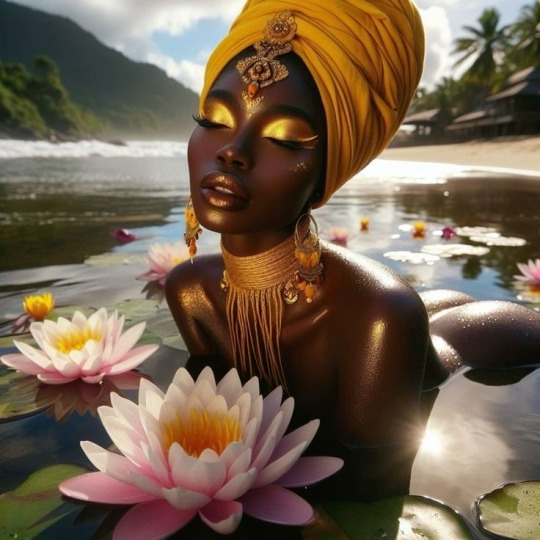

#black community#original photographers#black people#artwork#graphic design#black art#black power#black history#black culture#black family#black woman#black panther#black men#black history month#black knowledge#black love#blacklivesmatter#black representation#black relationships#black children#black king#black queen#black africans#africa fashion#egypt nt#egyptian art#african art
348 notes
·
View notes
Text
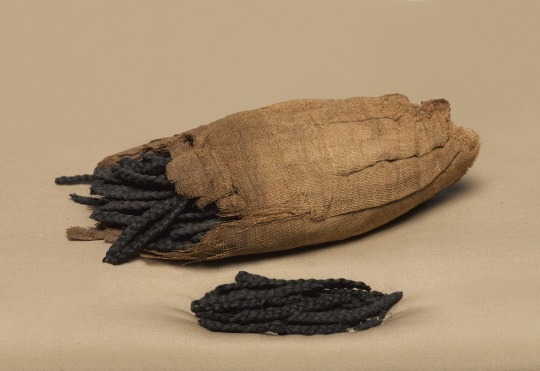
~ Bundle of Hair Extensions.
Date: ca. 2114-1502 B.C.
Period: Old Kingdom-early New Kingdom; 16th-18th Dynasty
Medium: Human hair, linen
▪︎ From the source: These hair extensions would have been placed in a tomb for use in the afterlife. In this world, Egyptians used extensions to make their wigs or natural hair thicker and more attractive, just as people do today. The reliefs in this case show hairdressers adding extensions like these to the hair or wig of Queen Neferu.
#ancient#ancient art#history#museum#archeology#ancient egypt#ancient history#archaeology#egyptian#egyptology#egypt#bundle of hair extensions#extensions#fake hair#queen tiye#old kingdom#new kingdom#16th Dynasty#18th dynasty#human hair#ca. 2114 b.c.#ca. 1502 b.c.
2K notes
·
View notes
Text

Queen Nefertari, detail from a colossal statue of Ramses II, Luxor Temple. Photo by Rudolf Franz Lehnert (13 July 1878 – 16 January 1948), an Austrian photographer.
#ancient egypt#queen nefertari#rudolf franz lehnert#czech-austrian-hungarian photographer#20th century#photography#travel pictures
150 notes
·
View notes
Text


Queen Mary of Denmark at the state banquet at Christiansborg Palace in honour of the Egyptian state visit to Denmark on 6 December 2024
For the first time ever wearing the Rose Diamond Bandeau—a new piece in the Danish Crown Jewels—converted from rose-cut diamonds in a belt to be worn around the waist last worn by Queen Lovisa (1851-1926). Queen Mary herself collaborated with the Danish Royal Collection—custodians of the Danish Crown Jewels—to make the diamonds convertible for new use.
The diamonds were originally owned by Princess Charlotte Amalie of Denmark (1706-1782) who left them for the crown upon her death. They were modified by Queen Caroline Amalie (1796-1881) to fit into the girdle in 1840.
#royaltyedit#historyedit#queen mary#crown princess mary#danish royal family#jewellery#2024#egypt to denmark 2024#**#gif: denmark
112 notes
·
View notes
Text
Archaeologists discover 5,000-year-old wine at the tomb of Meret-Neith in Abydos

A German-Austrian team led by archaeologist Christiana Köhler from the University of Vienna is investigating the tomb of Queen Meret-Neith in Abydos, Egypt. She was the most powerful woman in the period around 3,000 BC. Recent excavations prove her special historical significance: the researchers found 5,000-year-old wine and other grave goods. This fuels speculation that Meret-Neith was the first pharaoh of ancient Egypt and predecessor of the later Queen Hatshepsut.
The team recently began archaeological excavations in the tomb of Queen Meret-Neith of the 1st Dynasty (c. 3,000 BCE) in Abydos and discovered significant new information about this important historical woman.
Queen Meret-Neith was the only woman to have her own monumental tomb in Egypt's first royal cemetery at Abydos. Read more.
825 notes
·
View notes
Text




#history#Reina tany#Tany#tany#reina de egipto#queen of egypt#ancient egypt#egyptian#egypt queen#brazilian#brazilian actress#brazil#jose de egito#jose de egypto
30 notes
·
View notes
Text

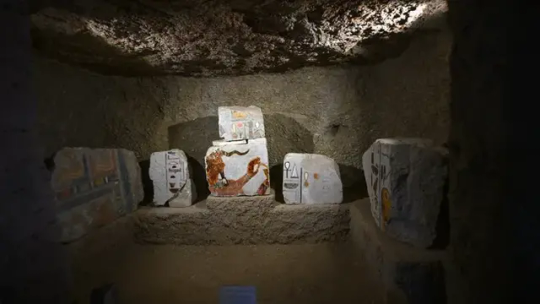
Excavations at Queen Hatshepsut's Temple Reveal Elaborate Burials, Decorated Blocks and Ancient Tools
A number of new discoveries have been made near the mortuary temple of Queen Hatshepsut in Egypt.
Archaeologists working in Luxor, Egypt, recently made several discoveries in the area around Deir al-Bahari (also spelled Deir el-Bahari and Dayr al-Baḥrī), the famous mortuary temple built by Hatshepsut, a woman who ruled Egypt as a pharaoh.
The team found the temple's "foundation deposit" — objects that the ancient builders buried when they began construction of the temple. The artifacts found include an adze, a tool used to cut and shape wood; a wooden hammer; two chisels; a wooden cast model for making mud bricks; and two stones that contain Hatshepsut's cartouches, ovals with hieroglyphs that can represent a ruler's name, Zahi Hawass, a former head of Egypt's Ministry of Antiquities who is leading the excavation team.




The mortuary temple was known as Djeser Djeseru in ancient times, and the adze, hammer, cast model and one of the chisels have inscriptions saying "the good god Neb Maat Re, in the temple Djeser Djeseru, beloved by Amun," Hawass said. Amun was the chief god of Thebes, which is now Luxor. The words "Neb Maat Re" refer to the name and some of the titles of the sun god Re (also known as Ra).
The team also uncovered 1,500 colorful stone blocks that were part of Hatshepsut's valley temple, which was located near her mortuary temple. The valley temple would have been decorated with a variety of scenes, some of which can still be seen on the blocks.
Hatshepsut was a female pharaoh who reigned from about 1473 to 1458 B.C, during the 18th dynasty. She was the stepmother of Thutmose III, who at times served as co-ruler and succeeded her after her death. Hawass said the team found evidence that Thutmose III restored Hatshepsut's mortuary temple sometime after her death. After the death of Hatshepsut, some of her statues and inscriptions across Egypt were destroyed but, in this case, Thutmose III sought to restore her temple.


Other finds in Luxor
The excavation team made a number of other finds in Luxor, including a cemetery dating to the 17th dynasty (circa 1635 to 1550 B.C.), when parts of Egypt were controlled by a foreign people called the Hyksos. Within the cemetery, the team found coffins holding the remains of ancient Egyptians. While excavating the cemetery, the team also found the remains of bows and arrowheads — weapons that would have been used to fight the Hyksos, Hawass wrote in a statement on Facebook. It's possible that some of the cemetery guards took part in the fight against the Hyksos.


The team also found the tomb of Djehuty Mes, who was an overseer of the palace of Queen Tetisheri. There is some debate about which pharaoh she was married to, but Queen Tetisheri lived during the 17th dynasty and possibly into the early 18th dynasty. Inside the tomb, archaeologists discovered a limestone offering table, a limestone funerary stela (commemorative stone slab), and a cosmetics vessel made of alabaster and faience (glazed ceramic), Hawass said.
Aidan Dodson, an honorary professor of Egyptology at the University of Bristol in the U.K. who was not involved in the excavation, said, "For me, the most important is the discovery of the blocks from the valley temple of Hatshepsut." While "her main temple has been extensively excavated and studied since the mid-19th century," Dodson said, "the valley temple was only briefly examined by Howard Carter some 120 years ago."
Analysis of the team's discoveries is ongoing.
By Owen Jarus.




#Excavations at Queen Hatshepsut's Temple Reveal Elaborate Burials Decorated Blocks and Ancient Tools#Queen Hatshepsut#Deir al-Bahari#Luxor#ancient temples#ancient tombs#ancient graves#ancient artifacts#archeology#archeolgst#history#history news#ancient history#ancient culture#ancient civilizations#ancient egypt#egyptian history#egyptian art#ancient art
85 notes
·
View notes
Text
4 rolls ancient Egypt washi tape set
#egypt washi tape#ancient egypt#ancient#british museum#egyptian art#egyptian mythology#egyptian history#egypt themed#egypt art#egypt queen
1 note
·
View note
Text





Queen Mary of Denmark debuting the newly assembled Rosestone Diamond Bandeau at the gala dinner for Egyptian state visit
#queen mary#danish royal family#royaltyedit#royal fashion#tiara#jewellery#rosestone diamond bandeau#egypt denmark 2024#mine
91 notes
·
View notes